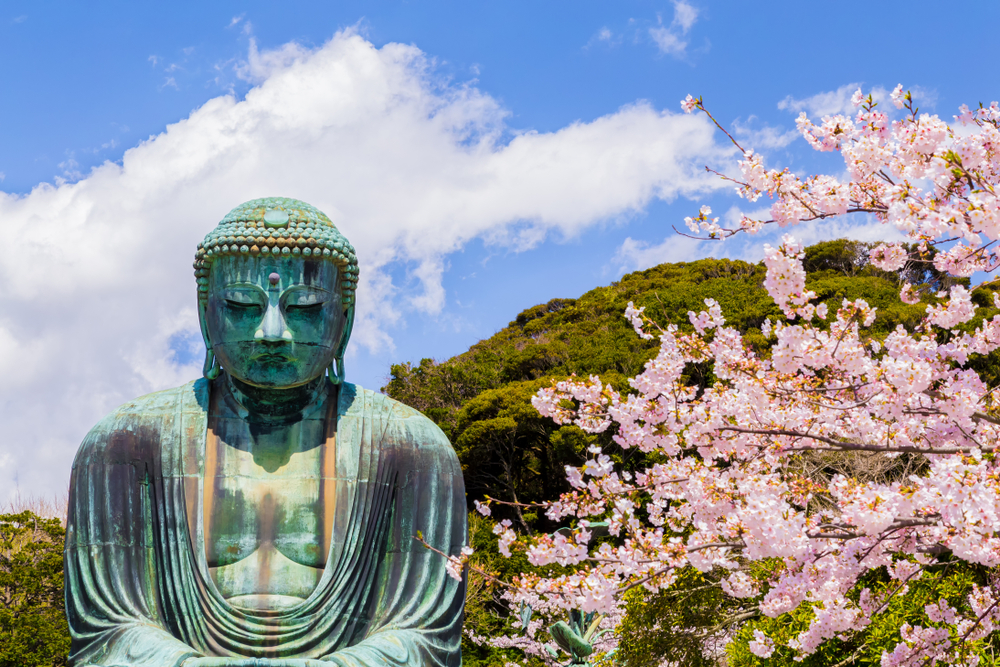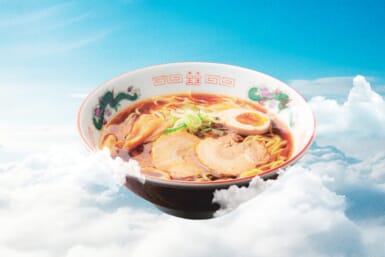While the notion of miyabi (elegance) dominated the aesthetic values of Japan up until the Heian period, the art of Kamakura draws a clear comparison with its subtle aesthetics derived from the idea of mujyokan – a sense of impermanence and vanity.
The fleeting beauty of the cherry blooms is one of the transitionary sceneries devotedly loved by the people during the Kamakura period – the time between the 12th and 14th centuries when the Kanto seaside town was Japan’s capital.
After visiting the Great Buddha statue at Kotoku-in, check out these recommended spots where visitors can witness the beauty of Kamakura during cherry blossom season (late March through early April).
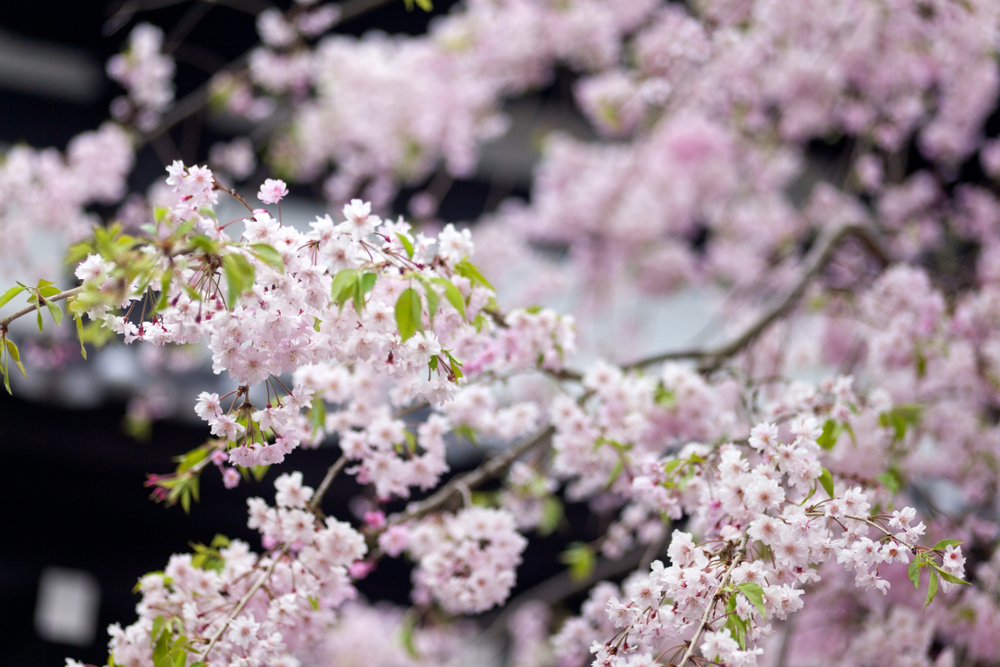
J. Henning Buchholz / Shutterstock.com
Jochiji
Located in Kita Kamakura, Jochiji is a highly acclaimed Buddhist temple that ranks fourth place among the Kamakura Gozan – top five Rinzai temples of Kamakura. The main draw of Jochiji in spring is most definitely the beautiful view of the tachihigan, a native sakura tree that is designated special natural treasure of Kamakura city.
The view of this special bloom along with the lovely pastel pink of shidare sakura (weeping cherry blossoms) that decorate around the bell tower are some of the works of natural art you can aspire on while you pleasantly stroll around Kamakura’s wilderness.
Details
• Admission to Jochiji is ¥200.
• To access Jochiji, board the JR Yokosuka line to Kita Kamakura Station then walk about 8 minutes to the venue.
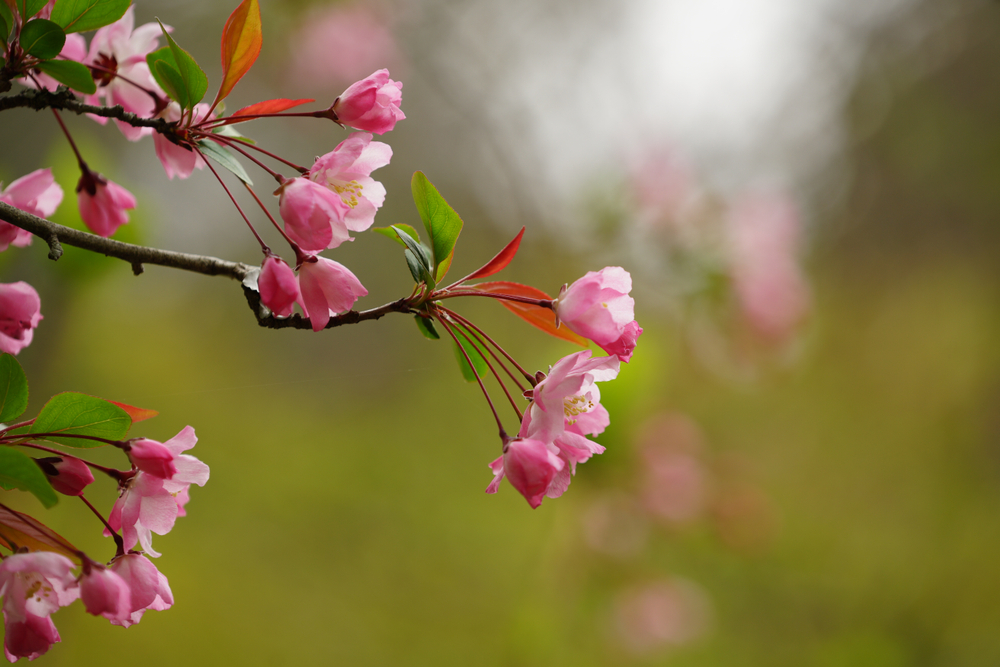
naturepicture_rika / Shutterstock.com
Kosokuji
While the area of Hase is particularly well known for the hydrangeas of Hasedera, did you know that there is another gorgeous flower temple quietly tucked away only three mins walk away from this famous site?
Kosokuji is a Buddhist temple significantly linked with the history of Nichiren and his disciple, built during the 13th century. In contrast to the lively atmosphere of Hasedera, Kosokuji possess awe-inspiring characteristics immersed amongst a tranquil environment of Kamakura’s dense forest.
The serene ground of the temple is decorated with seasonal blooms all year round and during spring the cherry blossoms and flowers of kaido trees induce beautiful spring colors to the solemn landscape. When the delicate pink of the sakura blends with the vibrant pink of kaido, the whole place evokes a majestic atmosphere that is absolutely spellbinding.
Details
• Admission to Kosokuji is ¥100.
• To access Kosokuji on public transport, board the train on the Enoshima electric railway to Hase Station then walk about 10 minutes to the venue.
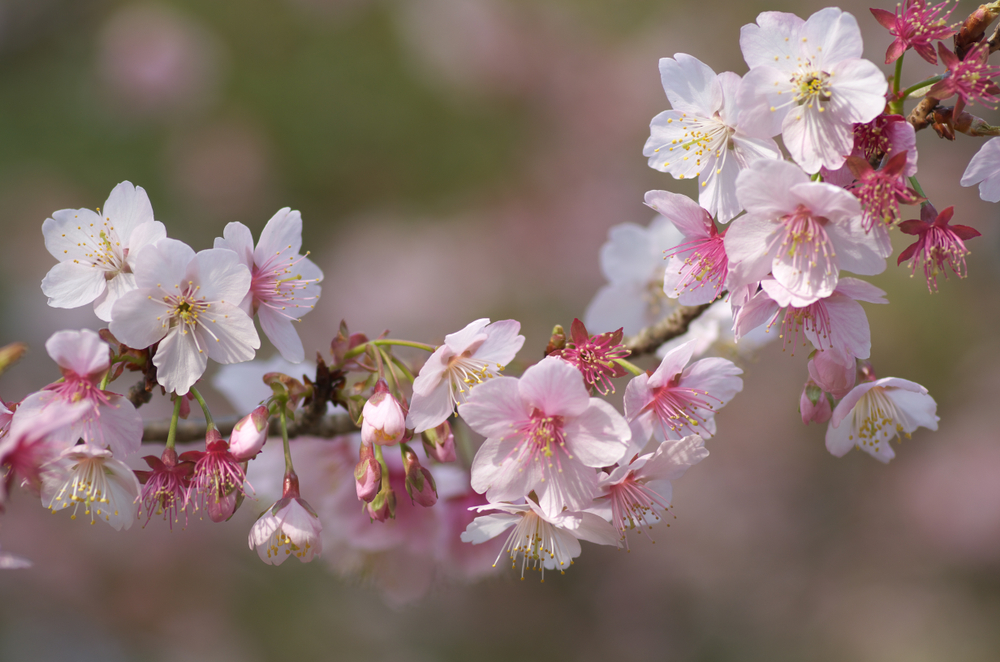
NORI26 / Shutterstock.com
Jojuin
Throughout history, while many of the past capitals were located inland, Kamakura is a distinctive political center which was established near the coast. As such, the ocean view of Kamakura is an iconic feature of the region beloved by the people ever since ancient times.
Located within the Gokurakuji area, Jojuin is a Buddhist temple built during the 13th century where people prayed for the prosperity of the Hojo family. Jojuin also functioned as the watch tower of Kamakura Shogunate as it was constructed on the hilltop of Gokurakuji Kiridoshi, looking over the magnificent Sagamiwan (Sagami Bay).
There is only a small number of sakura trees found within Jojuin, but the view of its magnificent trees amidst the backdrop of the ocean is an explicit portrayal of what Kamakura is all about.
Details
• Admission to Jojuin is free.
• To access Jyojuin, board the Enoshima electric railway to Gokurakuji station then walk about 3 minutes to the temple.

